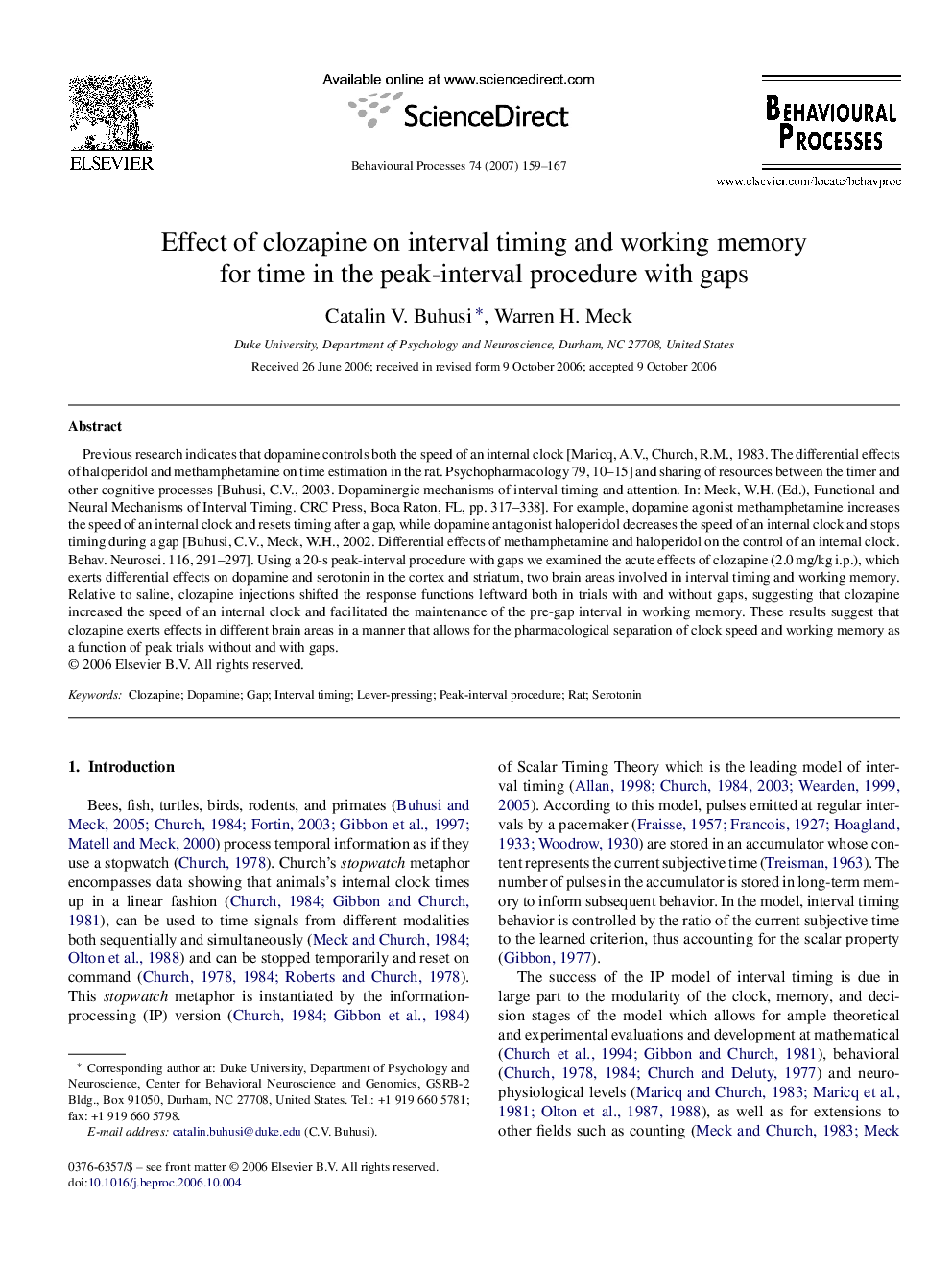| Article ID | Journal | Published Year | Pages | File Type |
|---|---|---|---|---|
| 2427763 | Behavioural Processes | 2007 | 9 Pages |
Previous research indicates that dopamine controls both the speed of an internal clock [Maricq, A.V., Church, R.M., 1983. The differential effects of haloperidol and methamphetamine on time estimation in the rat. Psychopharmacology 79, 10–15] and sharing of resources between the timer and other cognitive processes [Buhusi, C.V., 2003. Dopaminergic mechanisms of interval timing and attention. In: Meck, W.H. (Ed.), Functional and Neural Mechanisms of Interval Timing. CRC Press, Boca Raton, FL, pp. 317–338]. For example, dopamine agonist methamphetamine increases the speed of an internal clock and resets timing after a gap, while dopamine antagonist haloperidol decreases the speed of an internal clock and stops timing during a gap [Buhusi, C.V., Meck, W.H., 2002. Differential effects of methamphetamine and haloperidol on the control of an internal clock. Behav. Neurosci. 116, 291–297]. Using a 20-s peak-interval procedure with gaps we examined the acute effects of clozapine (2.0 mg/kg i.p.), which exerts differential effects on dopamine and serotonin in the cortex and striatum, two brain areas involved in interval timing and working memory. Relative to saline, clozapine injections shifted the response functions leftward both in trials with and without gaps, suggesting that clozapine increased the speed of an internal clock and facilitated the maintenance of the pre-gap interval in working memory. These results suggest that clozapine exerts effects in different brain areas in a manner that allows for the pharmacological separation of clock speed and working memory as a function of peak trials without and with gaps.
